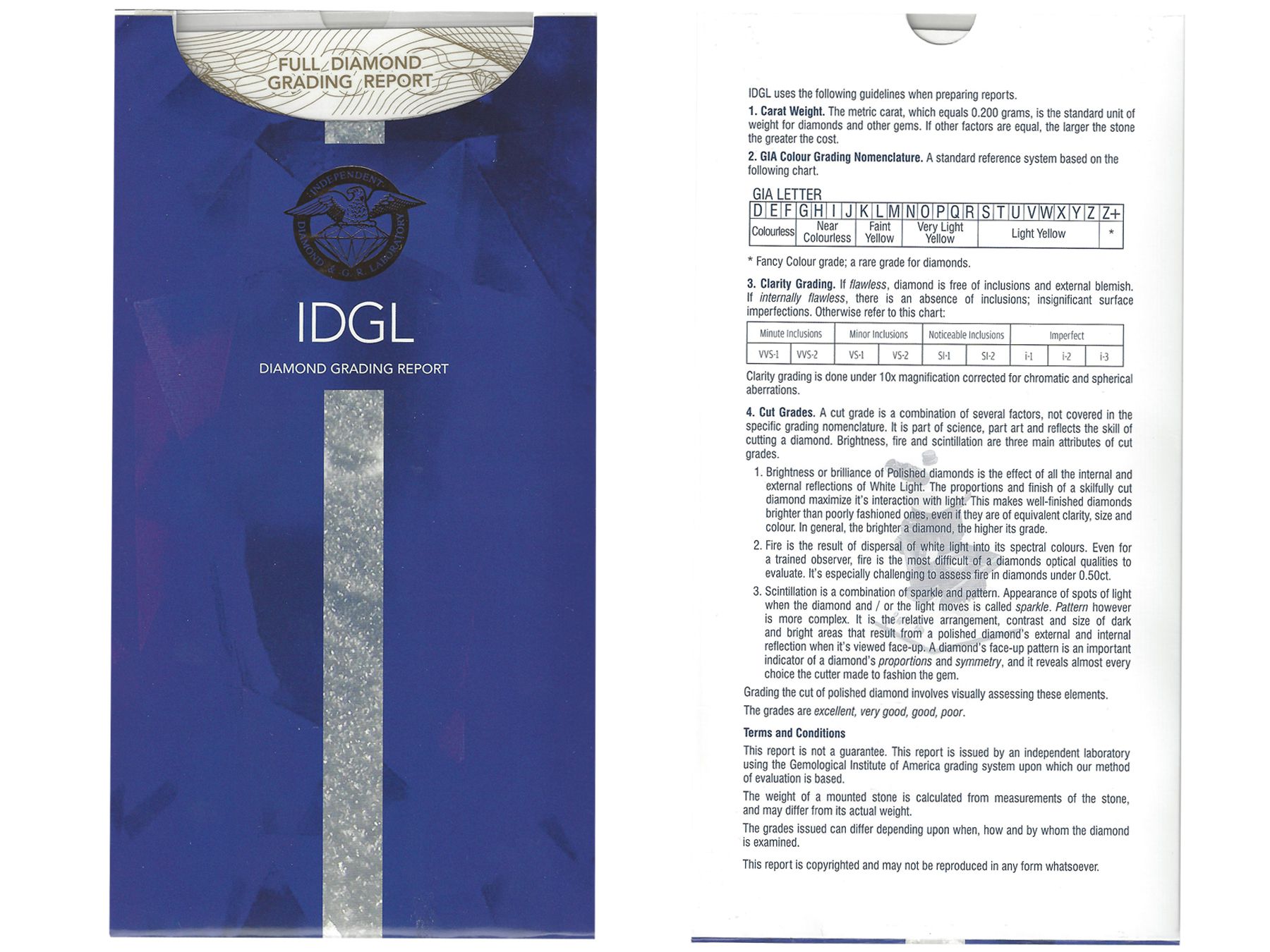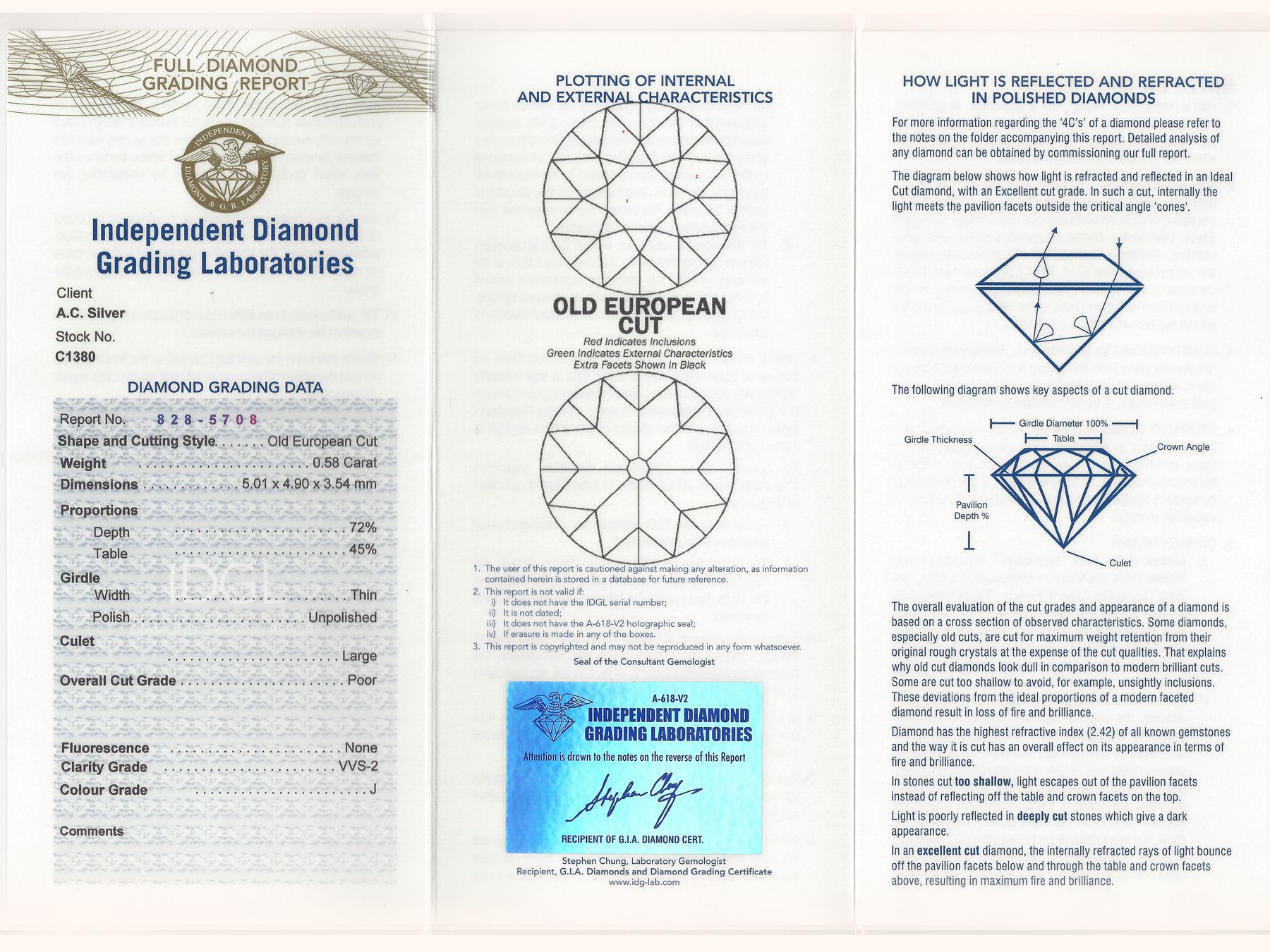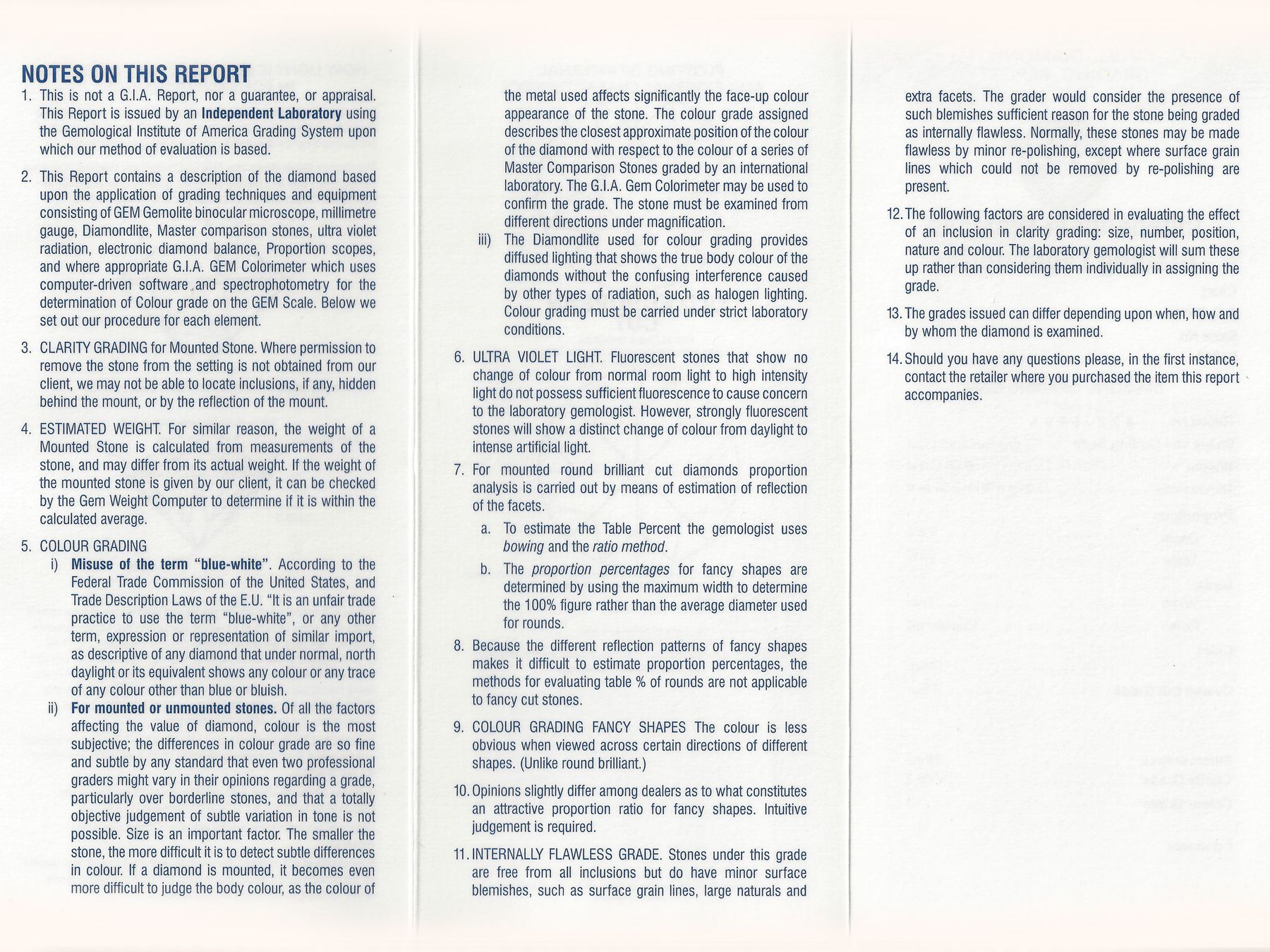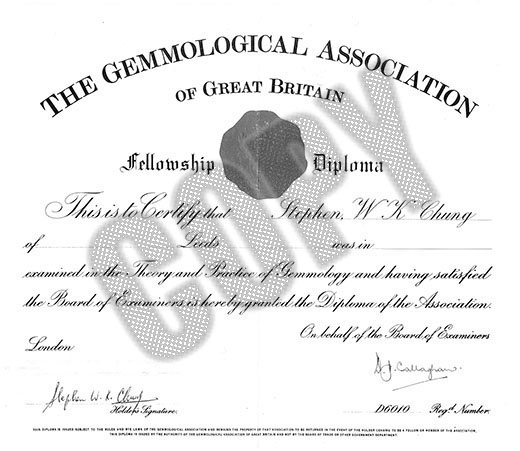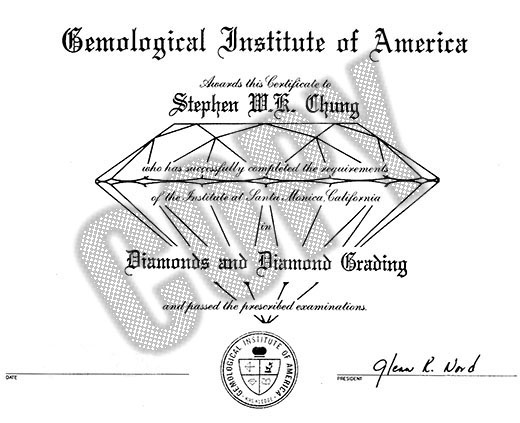Independent Diamond and Gemstone Grading Certificates and Report Cards
At AC Silver, an item of jewellery featuring diamonds or gemstones is supplied with a full independent diamond or gemstone grading certificate and/or a mini gem report card. Created and verified by a certified independent G.I.A. trained gemmologist.
Full ‘Independent Diamond Grading Report Certificates’ provide detailed information including the characteristics and qualities of all our feature diamonds.
Diamond certificates contain the following information;
-
Carat weight - One of the most important factors when purchasing a diamond or diamond jewellery, this can be the most significant aspect to value.
-
Dimensions - A diamond is measured in millimetres, tenths and hundredths of millimetres, to ensure complete accuracy. Dimensions of a diamond are significant in order to obtain an accurate weight. An exact weight can only be stated if a diamond has been unmounted and weighed, often not an option when mounted to antique jewellery.
-
Diamond cut - Diamond cut describes the specific cut of a diamond, antique diamond cuts predate diamond cutting technology - such as Old Mine Cut diamonds – new modern brilliant round cut diamonds are cut using lasers. Overall cut grades range from excellent to poor.
Diamond Information
-
To achieve the overall cut grade.
-
Proportions – Depth of pavilion, diameter of table and across the crown.
-
Girdle – Thickness, polish and symmetry, an uneven girdle leads to poor proportions.
-
Culet – if present, measured on size, from very small to extremely large.
-
Symmetry – Refers to cut and shape, often only contemporary laser cut diamonds display perfect symmetry, hand cut antique diamonds were not cut to exact specifications and measurements. Three measurements are often recorded for old or antique diamonds and two for new modern brilliant round cut stones (diameters and depth).
-
Brilliance – Measured by the amount of light refracted from the pavilion (bottom half of diamond) predominantly dependent on number of pavilion facets. The greater the number of facets, the more times light is refracted, increasing ‘sparkle’ – and therefore brilliance of a diamond. Brilliance is also affected by clarity; inclusions can affect the overall appearance of the diamond.
-
Polish - The finish of a diamond when polished after cutting. Modern diamonds set to contemporary jewellery will have better polish than old or antique diamonds; this is not always a major contributing factor determining diamond value.
-
Fluorescence – It is common to find diamonds with some form of fluorescence, measured using Long Wave UV light. Fluorescence is graded from very strong to none. 95% of diamonds which show fluorescence exhibit blue colours under LWUV but yellow and white can occur. The strength of fluorescence has no widely noticeable effect on appearance. In many instances, observers prefer the appearance of diamonds that have medium to strong fluorescence. In rare cases, some diamonds with extremely strong fluorescence may appear hazy.
-
Clarity, carat weight, colour and cut – known as the ‘4C’s are the most important factors in determining the quality of a diamond. Clarity range; Flawless to Included. Inclusions are internal and surface imperfections, many of which are not distinguishable to the naked or untrained eye. Flawless and internally flawless diamonds set to antique and vintage jewellery are incredibly rare. Technology over the last century has dramatically improved, enabling flawless diamonds to be sourced, cut and polished.
-
Plotting diagram – The plotting diagram shows any inclusions within the diamond and their exact location within the diamond.
-
Colour grade - Diamonds are graded for their lack of colour. The colour of a diamond is a factor which has become more important to customers in recent years; people have become well informed regarding characteristics which influence the value of a diamond. Diamond colour grading range, ‘D’ to ‘Z’, ‘D’ regarded as ‘colourless’ such a diamond has no hint of colour or yellow tone whatsoever. It is rare to locate antique diamonds with the highest colour grade. Many modern diamonds are graded ‘D’ or ‘E’ colour, through the twentieth century improved technology and diamond sourcing techniques have enabled consistently higher graded diamonds to the market place.
AC Silver requests cut grades for antique diamonds are not stated on diamond certificates, GIA also do not report cut grades for antique diamonds. Certificate templates are based on laser cut diamonds, a true reflection of hand cut antique stones, cannot be fairly reported.
Gemstone and Diamond Report Cards
Report cards are issued for multi diamond and gem set jewellery. Such cards often support jewellery set with a feature diamond and which are supplied with a full certificate.
Details listed on report cards relating to diamonds and gemstones;
-
Gemstone type
-
Carat weight
-
Cut
-
Dimensions
-
Colour grade
-
Clarity grade
Gemstone Certificates
For selected gemstones full report certificates are supplied and detailing the below;
-
Measurements
-
Weight
-
Shape/Cut
-
Transparency
-
Colour
-
Species
-
Variety
-
Origin
-
Comment
Gemmologist Qualifications
Gemmological Association of Great Britain
This diploma shows the gemmologist obtained his gemmological qualification with the Gem Association in Great Britain, and is an F.G.A.: Fellow of the Gem Association.
Gemmological Institute of America
The gemmologist obtained his Diamond Grading Certificate from the G.I.A., after passing his diamond grading examination with the G.I.A. and is a recipient of the certificate of academic qualification from the Institute.
For the avoidance of doubt: the diamond report issued is not a G.I.A. but a report issued by the gemmologist who has passed their written exams and obtained the academic credential which is shown in this certificate on display issued by the examiners of the Institute.
Frequently Asked Questions
GIA certification is not always necessary. Locate a reputable and trustworthy company to purchase your jewellery and they will ensure gemstones are graded appropriately to maintain their established reputation.
Diamond grading is down to the interpretation and eye of the grader. GIA will use multiple gemmologists to grade an item and then calculate the average grade. This grade will then be added to the certificate.
AC Silver does have some items of jewellery graded by the GIA (Gemmological Institute of America), however the majority of items are graded by independent gem labs. GIA are also required to remove gemstones from the setting in order to grade a gemstone, when dealing with antique jewellery this can be quite dangerous and potentially damage or lose originality of the antique piece.
If there is a requirement from the customer, we are always happy for the customer to take an item and have this independently graded.
We offer a 14-day return policy which will allow the time for the customer to arrange this.
Any more questions? Contact Us
